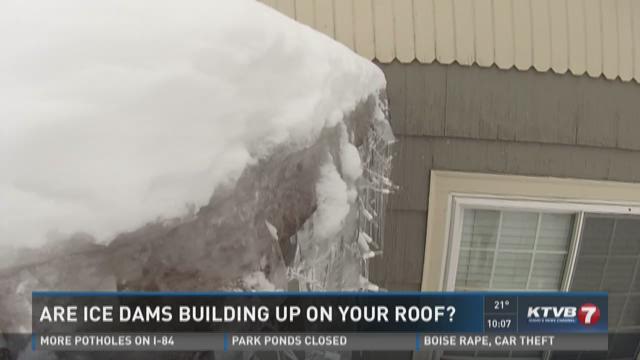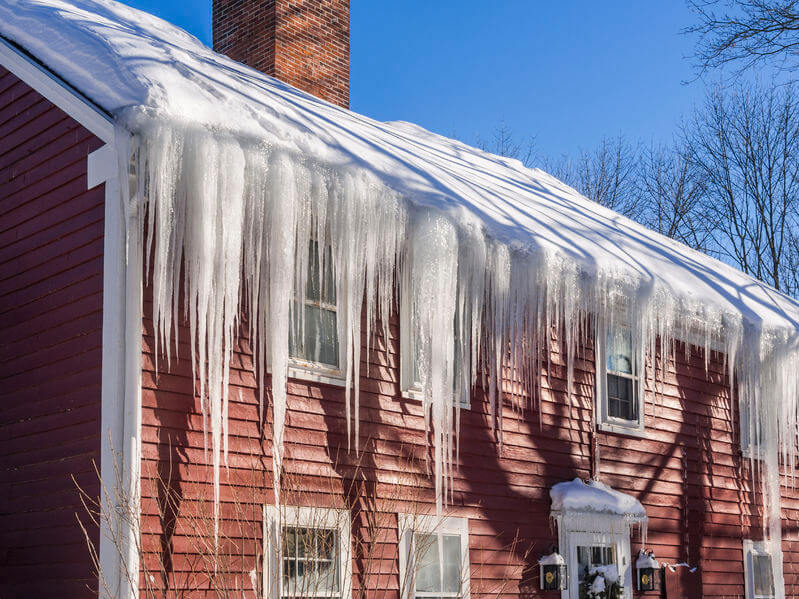Ice dams are a serious issue for homeowners and roofing professionals in cold climates or even where occasional snow may fall.
Ice dam with frozen downspout on flat roof.
Frozen downspout causing ice dam on roof.
Ask this old house general contractor tom silva explains the best ways to keep your roof and gutters free from those dreaded ice dams.
If a warm winter day isn t likely and you are concerned about your gutters or roof there is something you can try.
See below for a shopp.
A bit of warm water should be enough to break up frozen chunks and clear the blockage.
If the ground is safe and level grab a ladder and pour warm water into the top of the frozen downspout or gutter.
Fortunately you can reduce some of the issues associated with ice dams by using heat cables on roofs and gutters.
When gutters fill with water and freeze they cause the ice to build up and roll over the edge.
Instead use a hair dryer or consumer grade heat gun to heat up the outside of the downspout near the ice blockage.
You can also use a hose connected to a hot water tap to spray water on the outside of your frozen downspout.
An ice dam may form on your roof when temperatures bounce back and forth from above freezing to below freezing.
This scenario is often the result of a warm attic.
The water trickles down between the layer of snow and the shingles until it reaches the eave of the roof which stays cold because it extends beyond the side of the house.
Striking frozen downspouts with a hammer or baseball bat in the hopes of breaking up the ice inside them may cause more damage and make the situation worse.
Ice dams are formed by the continuous melting and freezing of snow due to heat escaping from the house or from a backup of frozen slush from the rain gutters the melted water flows under the snow and freezes as it reaches the unheated soffit area at the eaves thus.
An ice dam forms when the roof over the attic gets warm enough to melt the underside of the layer of snow on the roof.
The heat transfer may dislodge the ice and let water start flowing.
As the ice dam forms it may be hidden under a pile of snow so you cannot see the damage it s causing.
In a house with a cold roof icicles are less than a few inches long and are harmless.










